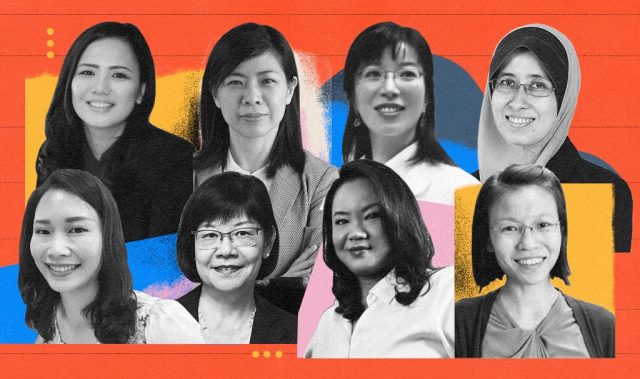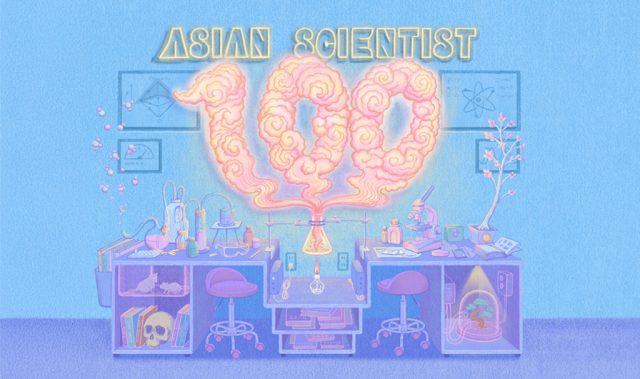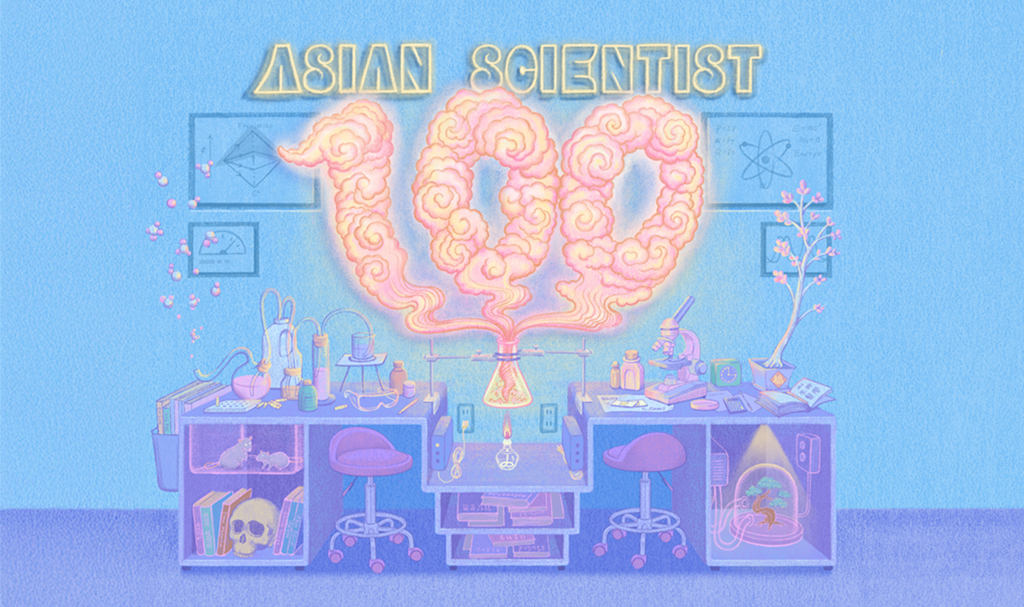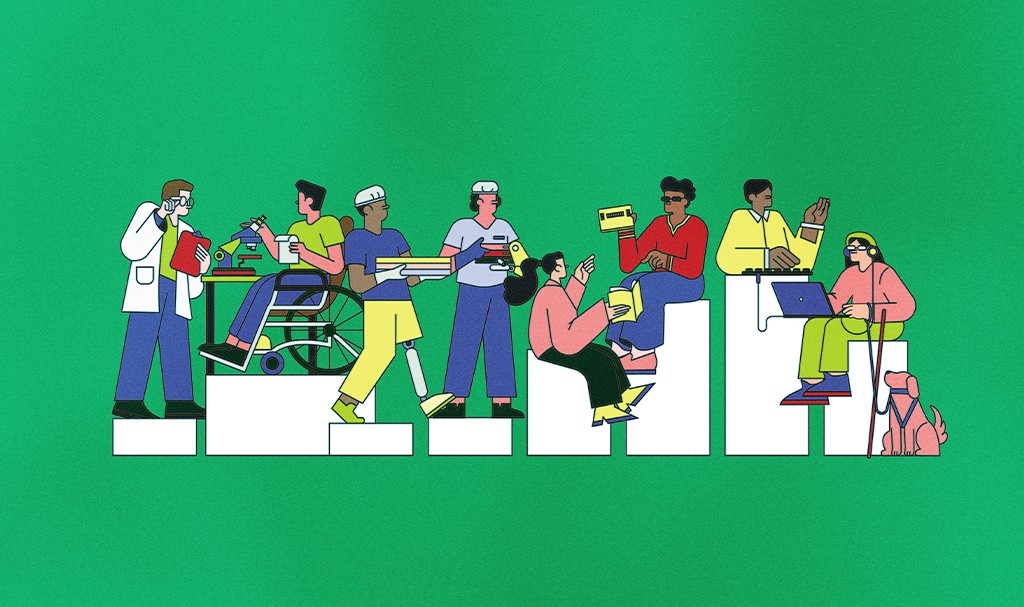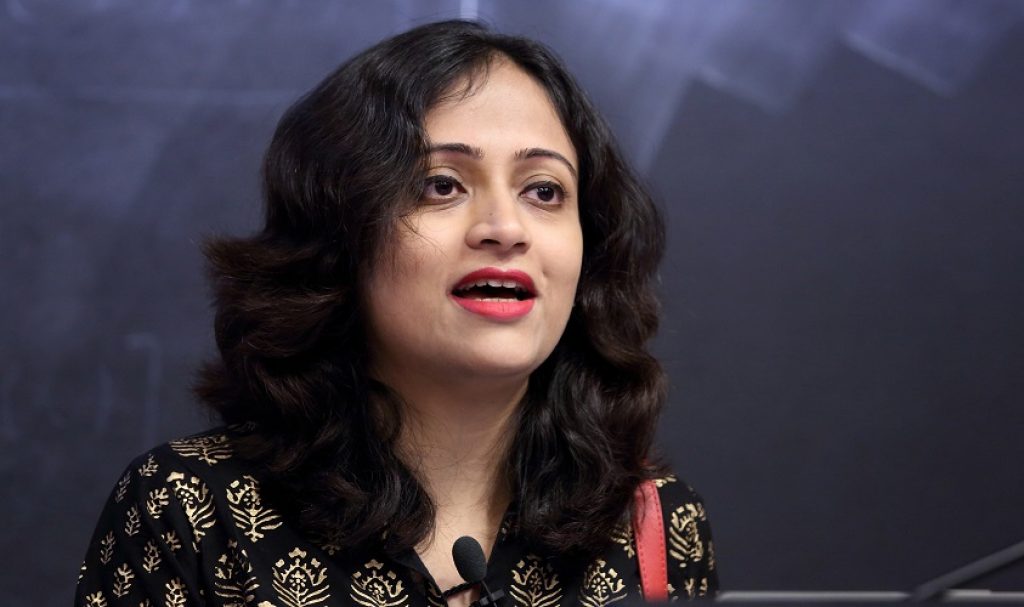
Urbasi Sinha
Associate Professor
Raman Research Institute
Bangalore, India
AsianScientist (Nov. 27, 2018) – When you toss a coin into the air, you expect it to land with one of two possible outcomes—heads or tails. In the realm of quantum physics, however, a superposition of states can occur, whereby the result of the coin flip can be both heads and tails at the same time. Think of this as a spinning coin, where both heads and tails exist at once.
Mind-boggling as this fundamental phenomenon may be, it is the basis on which researchers are developing quantum computers—devices that will be thousands of times faster than existing ones, with much greater capacity to perform complex calculations. Associate Professor Urbasi Sinha of the Raman Research Institute in Bangalore, India, is helping to usher in this age of super-fast computation with her research.
Over the course of her career, Sinha has devised methods to reliably generate light particles, or photons, and manipulate their interactions. These quantum bits, also known as qubits, are the means of encoding information in quantum computers. For her contributions to her field of quantum optics, Sinha received the ICO/ICTP Gallieno Denardo Award from the International Commission for Optics (ICO) and the International Center for Theoretical Physics (ICTP).
In this interview with Asian Scientist Magazine, Sinha shared her thoughts on the holy grail of quantum computing and the state of research in India.
- Who or what inspired you to become a scientist?
- How did you become interested in the field of quantum physics?
- You were recently awarded the ICO/ICTP Gallieno Denardo Award for your pioneering research in photonic quantum technologies. Can you explain your key findings in simple terms and the potential applications arising from your discoveries?
- Could you please describe a project that you are working on now?
- What are some of most pressing challenges facing the scientific community in India?
- How do you think these challenges can be overcome, and what changes do you hope to see?
- What keeps you motivated to do research despite the challenges?
- What advice do you have for early career scientists in Asia?
I have had a curious and analytical mind since childhood and never shied away from seeking clarifications when things did not make sense to me. I also had a natural affinity towards science- and mathematics-based subjects that were taught in school. Thus, when the time came to choose a career path, it was only natural for me to train to be a scientist. My parents have always been very supportive of my thoughts and desires; this also helped immensely when I decided to choose scientific research as my career goal.
Quantum physics was taught as a fundamental subject during my bachelor’s and master’s degree coursework. I was always intrigued by it—especially by the counter-intuitiveness of the underlying concepts. While pursuing my natural sciences tripos [or final examinations] in Cambridge University, UK, I had the good fortune of performing a precision experiment using a self-made Josephson junction—a thin layer of a non-superconducting material sandwiched between two layers of superconducting material. This experiment was a fascinating learning experience and was my first stepping stone towards a research career in quantum physics.
During my PhD, I continued my explorations of experimental aspects of the Josephson Effect which is an example of a macroscopic quantum phenomenon. As I learned more, I realized there was still more to learn. Thus, when I had the golden opportunity of delving into quantum optics during my postdoctoral research at the Institute for Quantum Computing, Canada, I did not look back. The opportunity to learn something new, to discover something fundamental or to work on a cutting-edge technological application; all this is simultaneously possible with quantum physics research. This is what keeps me perennially interested and excited.

Our Quantum Information and Computing lab at the Raman Research Institute in Bangalore, India is the first lab in India dedicated to research in quantum information processing and its applications through quantum optics tools.
We have been working on different problems in quantum computation, quantum communication, quantum information processing as well as fundamental tests of quantum mechanics over the last several years.
A key contribution from our lab has been in the domain of higher-dimensional quantum information science and quantum computing. We know that the conventional quantum bit, or ‘qubit,’ describes a system with two dimensions. When we have ‘n’ such qubits, we have access to a state space whose dimension is proportional to 2n.
One of the holy grails in quantum computing is to get to a system which is a coherent superposition for n=50. What we are ultimately interested in is 250. If instead of 2, we use a higher base, say 3 or 4 or more, then the number ‘n’ naturally drops as well. For instance, 23 = 8 while 32 = 9. Thus, two three-dimensional systems can give us access to a similar state space as three two-dimensional ones.
In our lab, we have established an architecture for scalable, robust, photonic higher-dimensional systems using the spatial degree of freedom of single photons. We now have also shown that the system we have is almost maximally entangled. This now forms the test bed for a plethora of potential applications in higher-dimensional quantum computing and quantum communication.
I would like to highlight our work in free space quantum communication. The standard method of securing a message is cryptography; the sender encodes a message using a secure key which is then received by the receiver who decodes it through knowledge of the key. If any unwanted party tries to eavesdrop, it fails as the key is only known to the sender and the receiver. So, the distribution of the key becomes the most crucial step and needs to be done in a secure way.
Classical key distribution protocols are vulnerable to algorithmic breakthroughs as well as trust in a human element. Another imminent threat is the advent of quantum computing itself. While on the one hand, quantum computing promises speed like no other, a suitable quantum computer can also break certain codes which keep classical key distribution secure. What is the solution to the problem? It is quantum, of course!
Instead of using classical means of key distribution, we can change the paradigm by using laws of quantum physics to distribute the key through quantum key distribution. Our lab is the first lab in India to be pursuing active research in free space quantum key distribution. Through a mega project being pursued in collaboration with the Indian Space Research Organization, we propose to explore quantum experiments using satellite technology in the not-so-distant future. This is India’s first stated project in satellite-based quantum communication and we are indeed in a superposition of being excited, apprehensive and massively proud at the same time with what the future has in store!
Science in India has seen an upward growth since my undergraduate days. Indeed, there is now adequate funding available to enable high-end research. Gone are those days when our seniors would complain about the long delays in receiving equipment from foreign companies. However, while funding per se is not the main concern now, there is still an unconscious bias towards providing more funding for translatable research than for the basic sciences.
Science and technology go hand in hand, so progress in technology cannot happen without furthering our understanding of fundamental principles. This is a challenge we do need to address as a scientific community.
There is also the trend that most of the high-end research is being performed in dedicated research institutes and not so much in our universities. Yet, our universities house the bright young minds of our nation, and if research conditions in the university labs remains generally sub-par, then our research impact becomes restricted, and our students graduate from their coursework with the general idea that experiments are meant to fail!
This leads to brain drain, with many of them opting to pursue their research in international labs in spite of the existence of an internationally competitive research environment in India itself.
Thus, a change in college and university infrastructure will go a long way towards retaining bright minds within the country, and as a result, produce more impactful research outputs.
A concerted effort at the grassroots level is what we need. We need to improve the infrastructure available in schools, colleges and universities so that the research ethos is gradually built in young minds. This obviously cannot happen in a day. I understand that there is a high-power committee that is looking at providing solutions to such problems, and I do hope that some positive change comes out of this.
I also hope that more bright young students get motivated to pursue their doctoral research in Indian labs, thereby diminishing the brain drain we currently face.
I belong to the category of scientists who do science because we love exploring, discovering and being fascinated by the scientific process. When one is motivated enough, one learns to survive in spite of the challenges that surround us.
I try to do my best to play a small role when I can to improve [the situation around] certain adversities. This includes a very extensive involvement in outreach activities, including seminars and public lectures for students and the general public. I also perform demo experiments in the public fora. I hope that such outreach activities will eventually contribute to students being more motivated to stay in India for their research, especially in quantum technologies.
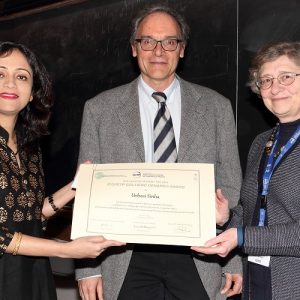
Please follow your dreams and remain true to your convictions. If science truly interests you and fascinates you, then research is your forte. Science is not pursued with the intention of earning a lot of financial remuneration; the remuneration here is at the intellectual level, in the form of the thrill of discoveries big and small.
The environment may not always be conducive to unfettered science—there will be hurdles in terms of resources, equipment as well as human capital. Sometimes, what you want to pursue may not be interesting to the funding agencies. But do not let this deter you from ploughing on.
Science in Asia is poised at a very interesting phase now, and with concerted efforts, we have proven to be on par or even better than our Western counterparts in terms of ideas. Hence, I urge you to please keep up the good work!
This article is from a monthly series called Asia’s Scientific Trailblazers. Click here to read other articles in the series.
———
Copyright: Asian Scientist Magazine; Photo: Urbasi Sinha.
Disclaimer: This article does not necessarily reflect the views of AsianScientist or its staff.





